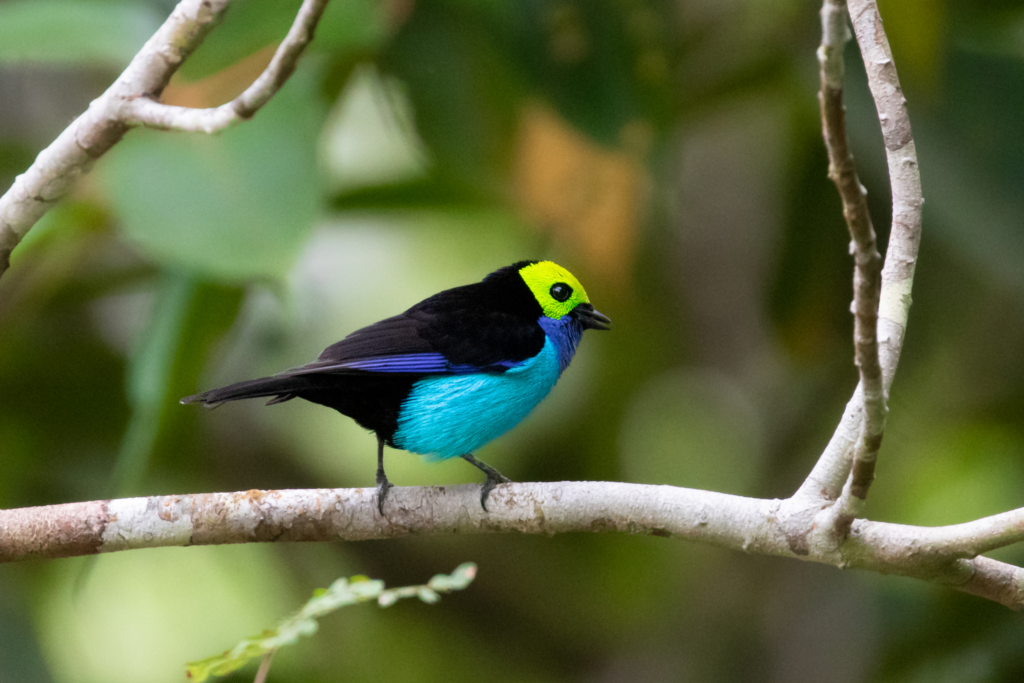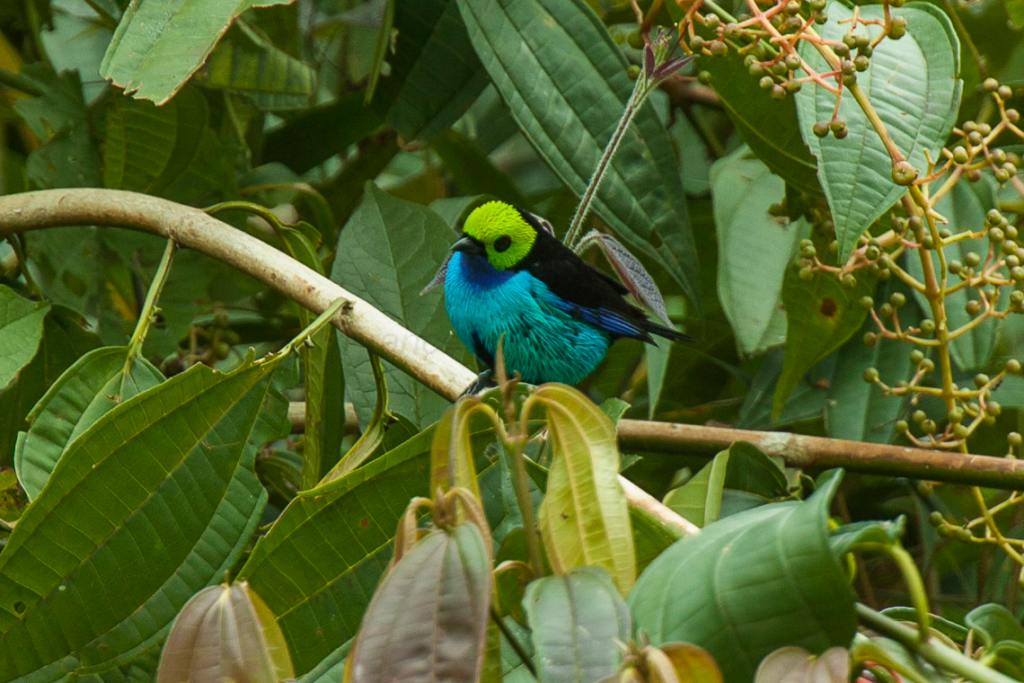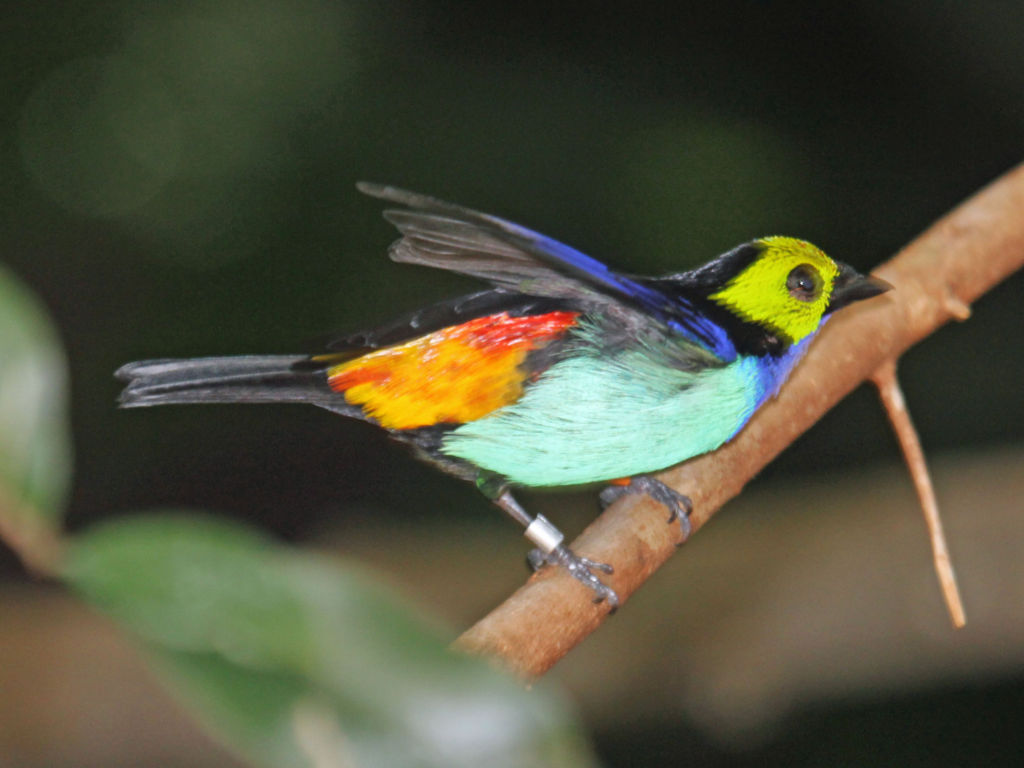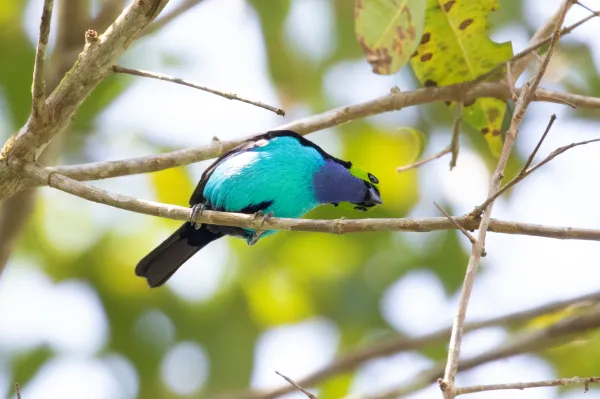A small, equally stunning bird that can only be found in the Amazon.
Paradise Tanager

“Paradise Tanager {Tangara chilensis}” by Drew Avery is licensed under CC BY 2.0.
The paradise tanager (Tangara chilensis) is a brilliantly colored songbird measuring 13.5 to 15 cm in length. The sides of each face are green with violet-blue running across the face before fading to a lighter blue on the belly. Upperparts are black, as are the legs and feet. The rump is red.

“IMG_2574” by gary_leavens is licensed under CC BY-SA 2.0.
Female birds look practically identical to the male.
In fact, in most cases, it would take DNA testing to tell them apart.

thibaudaronson is licensed under CC BY-SA 4.0 .
They are endemic to, and can be found in Bolivia; Brazil; Colombia; Ecuador; French Guiana; Guyana; Peru; Suriname, and Venezuela.

Abby Darrah is licensed under CC BY 4.0.
Within the countries, they are found in they like to live in wooded areas in lowland locations.

“File:Paradise tanager at California Academy of Sciences.JPG” by Toby Hudson is licensed under CC BY-SA 3.0.
These birds are often found in the canopy hunting for insects, fruit, berries, and nectar.
 “File:Paradise Tanager – Manu NP – Perù 7844 (23224160816).jpg” by Francesco Veronesi from Italy is licensed under CC BY-SA 2.0.
“File:Paradise Tanager – Manu NP – Perù 7844 (23224160816).jpg” by Francesco Veronesi from Italy is licensed under CC BY-SA 2.0.
During the breeding season, these birds build a nest made from vegetation within which are laid two eggs. These eggs are white with purple-red flecks and are incubated for around 16 days with the chicks being fledged abot 12 to 14 days after they hatch.
 “File:Paradise Tanager Woodland Parks Zoo RWD2.jpg” by DickDaniels (http://carolinabirds.org/) is licensed under CC BY-SA 4.0.
“File:Paradise Tanager Woodland Parks Zoo RWD2.jpg” by DickDaniels (http://carolinabirds.org/) is licensed under CC BY-SA 4.0.
Though these birds are considered common throughout their range their population is decreasing.
 “calliste septicolore, paradise tanager, sete-cores-da-amazônia, tangara del paraíso” by thibaudaronson is licensed under CC BY-SA 4.0.
“calliste septicolore, paradise tanager, sete-cores-da-amazônia, tangara del paraíso” by thibaudaronson is licensed under CC BY-SA 4.0.
You can watch this bird right here in the video below:





